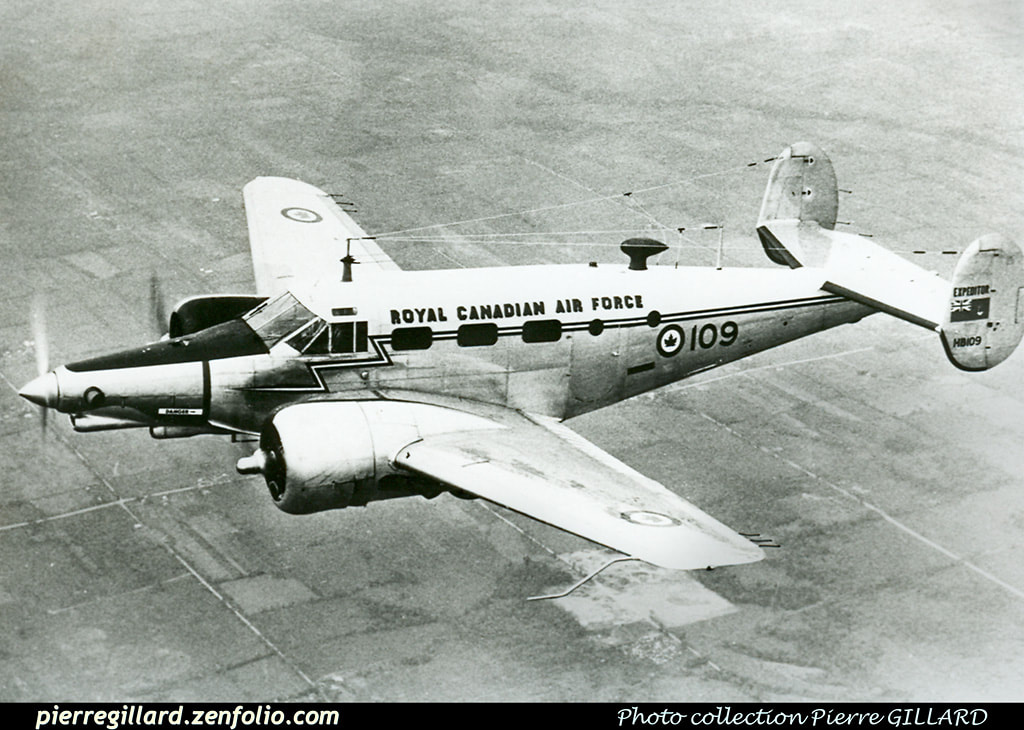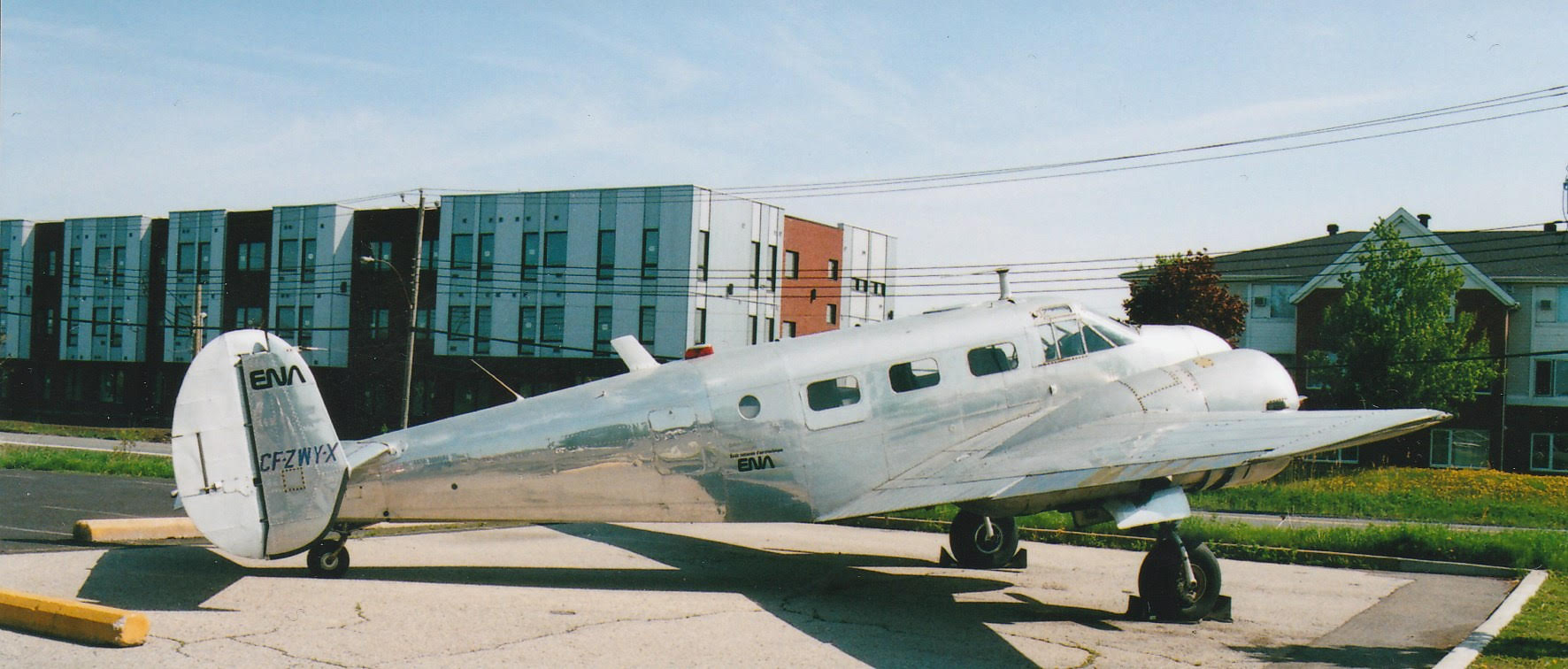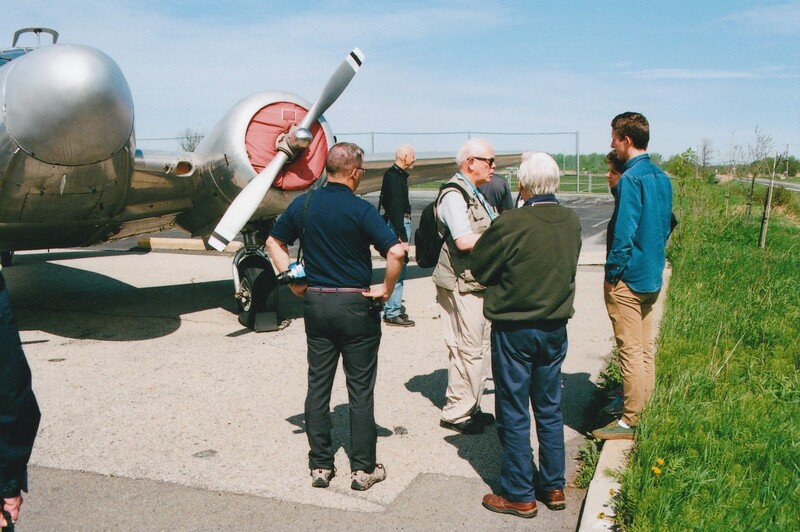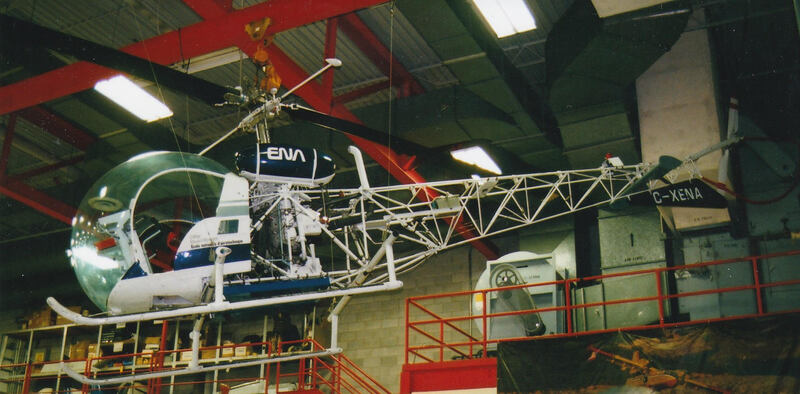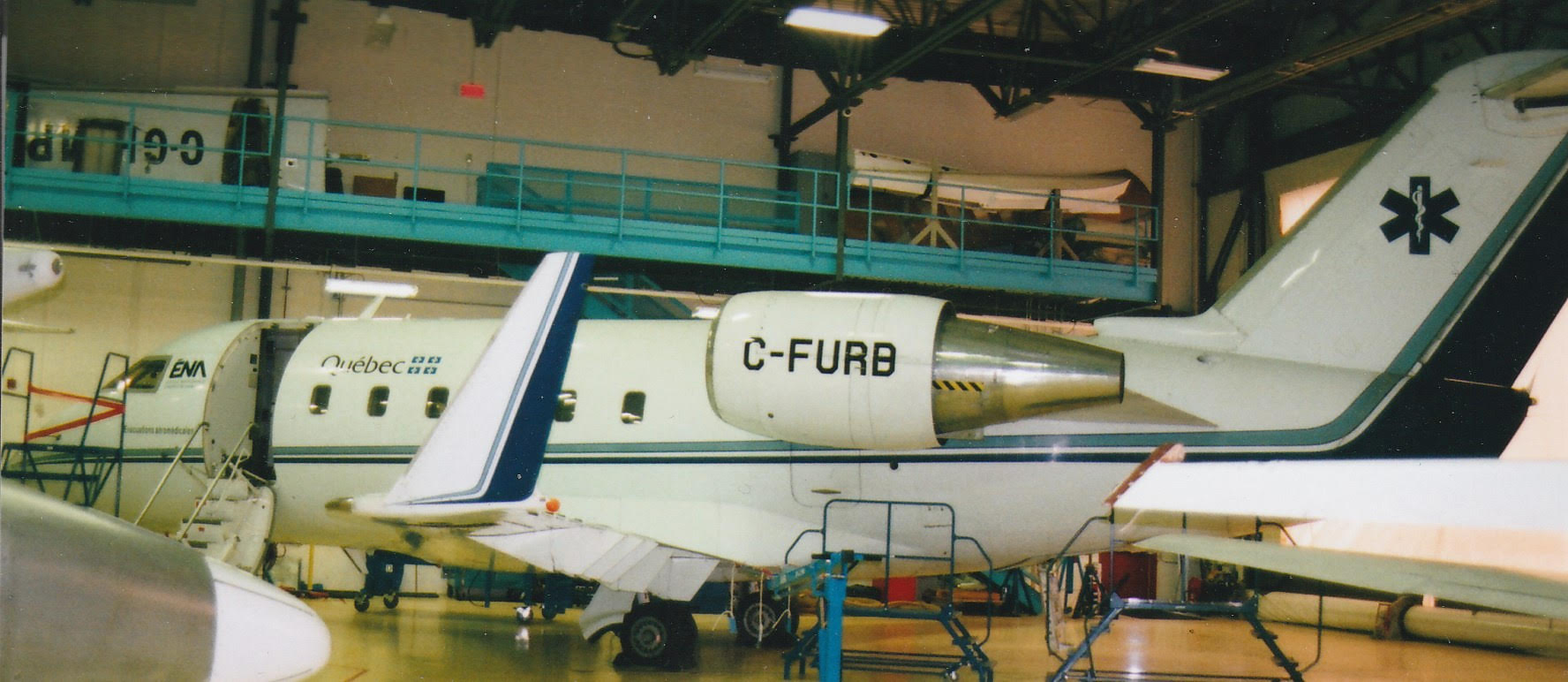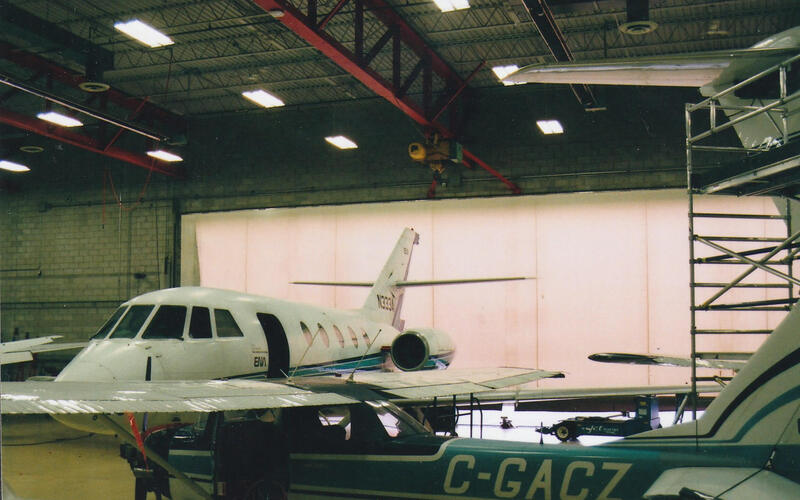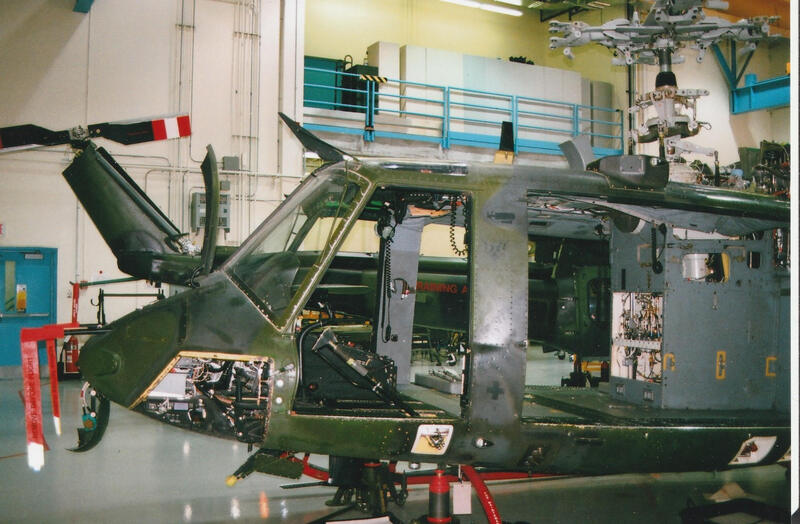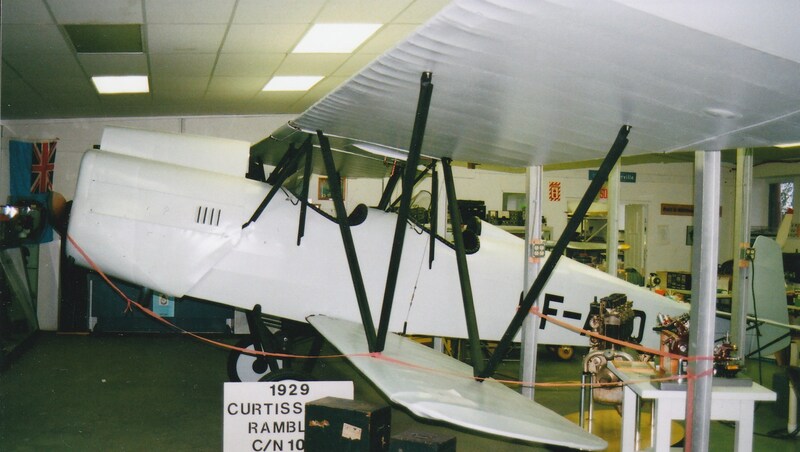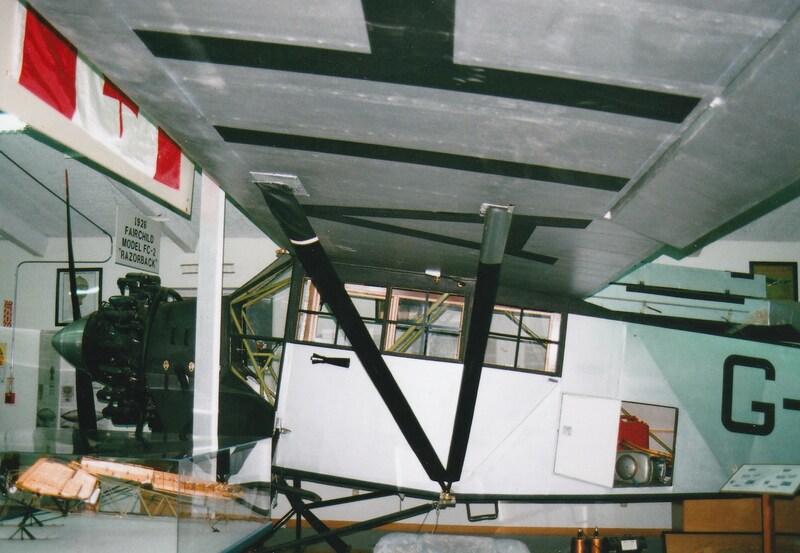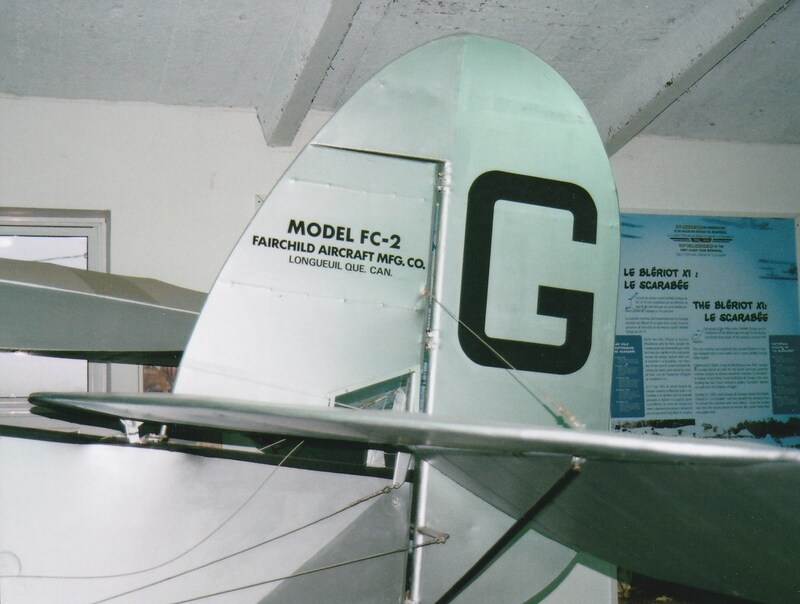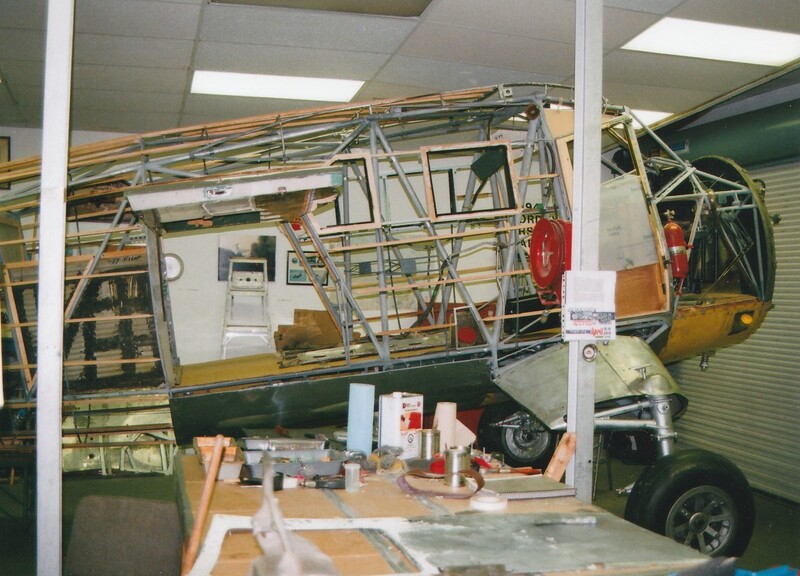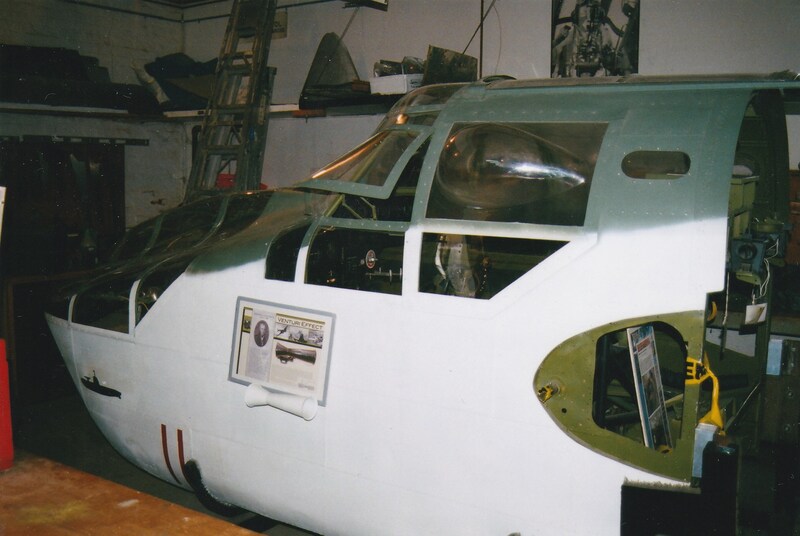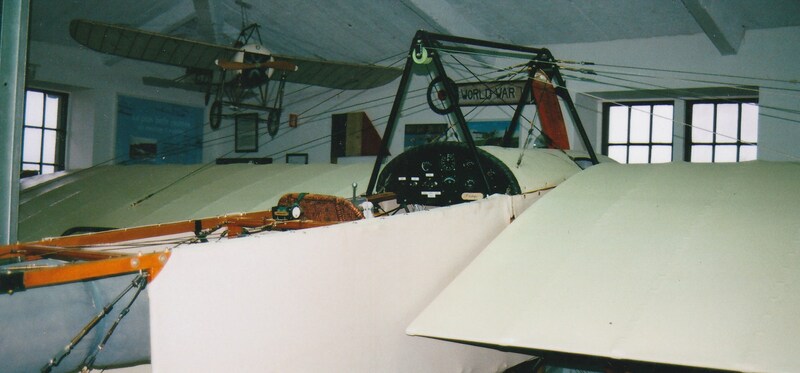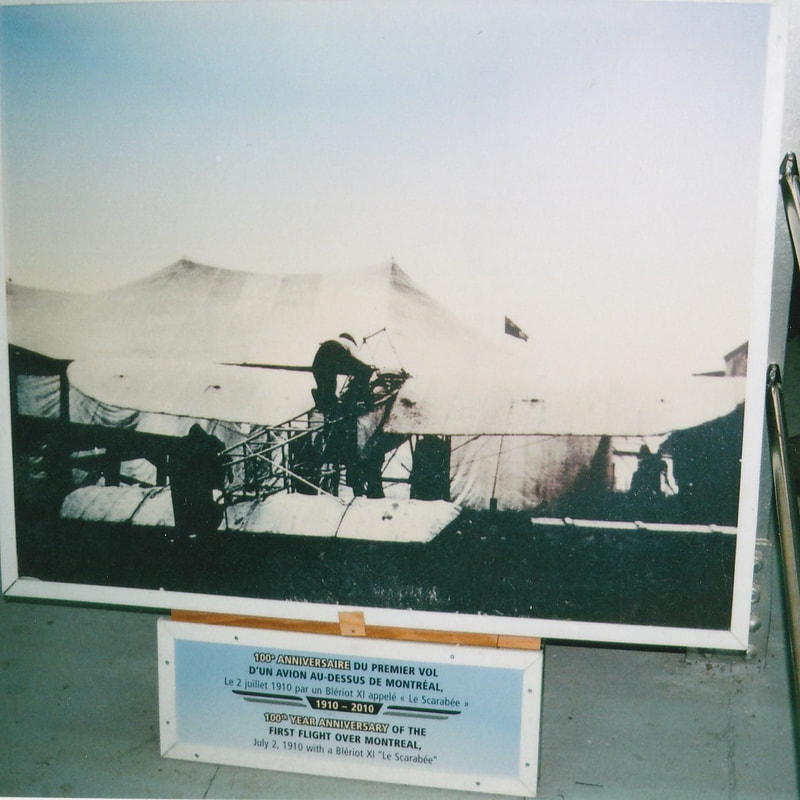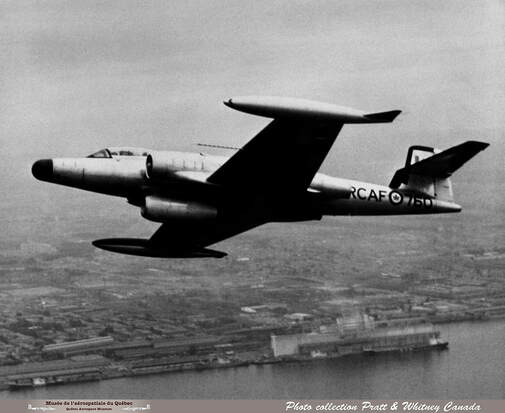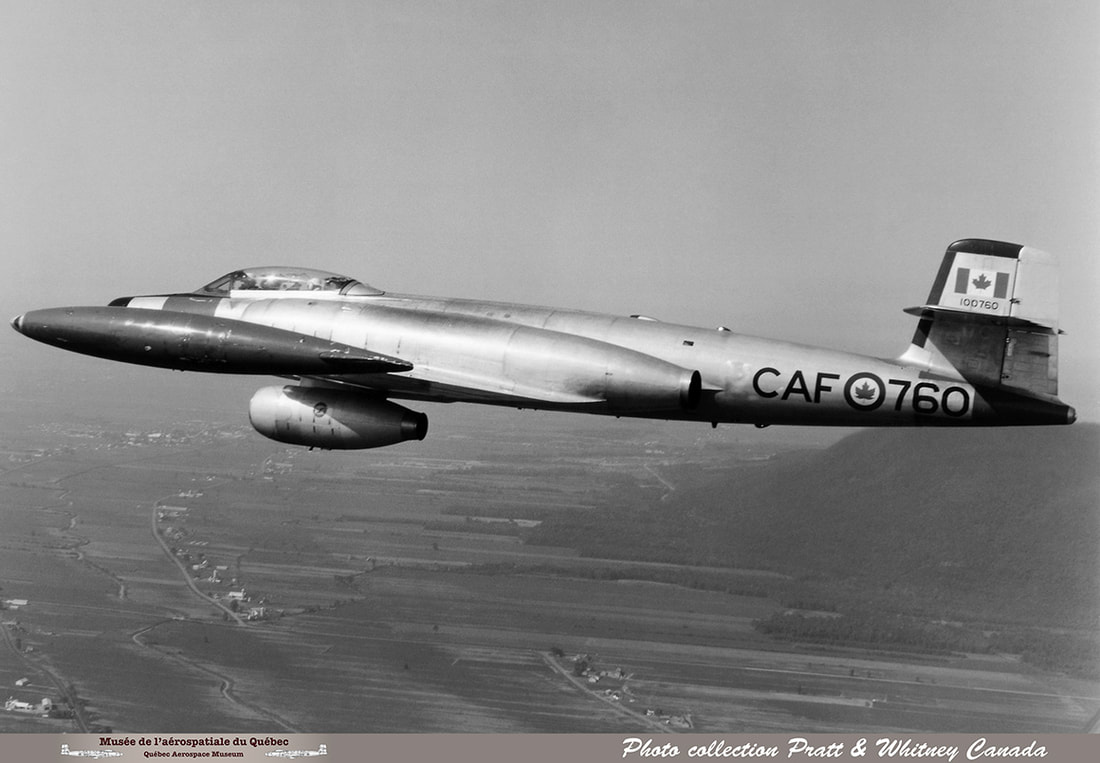The 2019 CAHS Annual Convention in Montreal
|
Beech Expeditor
(Pierre Gillard photo) |
|
A tour of the Montreal Aviation Museum and then a trip to St. Hubert Airport, to tour the Ecole Nationale Aeronautique (ENA), the new Quebec Aerospace Museum (QAM) and the home of RCAF 438 Tactical Helicopter Squadron, enriched the stellar program.
An excellent report on the visit to St. Hubert, with images by Pierre Gillard, Director-General of the Museum, can be found at http://www.maq-qam.ca/ About 60 Convention attendees gained a renewed appreciation of Montreal’s diversified and thriving aviation scene. The gathering provided opportunities to connect with old friends and meet new aviation enthusiasts, while enjoying the hospitality of the Montreal Chapter and our hosts at the ENA, the QAM the 438 Squadron “Wildcats.” John Abbott College, in picturesque Saint-Anne-de-Bellevue near the western tip of the Island of Montreal, was again the venue as it had been at our previous Montreal convention in 2010. Accommodation was also provided at the Courtyard Montreal West Island. Proceedings opened on 22 May with the traditional evening meet and greet after a National Board of Directors meeting. Presentations began on 23 May when Montreal Chapter President Jim Mason introduced colleague Dick Pickering, who traced the 50-year flying career of his father, Doug Pickering. In “The Romance of Flying,” Dick covered the achievements of Doug Pickering, a Hamilton native, with the Hamilton Aero Club, 1928-1937; the Red Lake Gold Rush, 1937-1940; and Laurentian Air Services, 1940-1975. Cody Lincoln of Winnipeg, in “Victory by Assembly Line II,” then described the contribution of more than one million women who worked full-time in the Second World War effort at home. Cody, an accomplished pilot and frequent guest speaker, is currently a University of Manitoba student aspiring to acquire a mechanical engineering degree. The colourful story of “Larry” Lesh, the teenaged “Flying Lad” or “Winged Wizard” glider pilot who became the first known aviator in Canada circa 1907, was told by Pierre Thiffault. Author of several aviation books and articles, Pierre worked 31 years in Air Traffic Services for Nav Canada. Afternoon presentations began with a well-illustrated history of Northern Aerial Mineral Exploration 1928-1933 by Robert Galway. An authority on early frontier aviation activity in Canada, Dr. Galway has often shared his expertise at CAHS meetings. Jim Mason then discussed “Canadian Boardrooms in the Sky,” reviewing executive aircraft that he observed at Dorval Airport through the years. Jim’s extensive aviation began early when he started his own aircraft washing business at Dorval, then moved to Execaire as a flight dispatcher and on to flying as a pilot with Execaire, Air Canada and ACMI charter services. Attendees next checked out the vintage aircraft, book and art collection of the nearby historic “Old Stone Barn” of the Montreal Aviation Museum, dedicated to preserving our aviation heritage with particular emphasis on Quebec. Completed projects include a reproduction of the Bleriot XI (Le Scarabee), which made its maiden flight in 2014; a replica Fairchild FC-2 bushplane completed in 2012 after a 12-year effort; a full-size Curtiss-Reid Rambler replica rolled out in 2017 in time for Montreal’s 375th anniversary and Canada’s 150th; and a Fleet Canuck. Restorations in progress include a Noorduyn Norseman and a Fairchild Bolingbroke. |
See our trip to St. Hubert below
Mouse over or click on any of the photos for a detailed description. Some shots from inside the Montreal Aviation Museum.
Mouse over or click on any of the photos for a detailed description. |
Norseman Mark VI, C-FGYY, was acquired in the summer of 2017 from Kuby’s Aircraft of Kenora, ON. It was delivered to the USAAF in 1944 and flew mainly with Canadian commercial operators. Plans are to restore it to CF-AYO, the prototype Norseman. George Fuller presented a slide show on the famous 1910 Montreal Air Meet, the first aviation gathering in Canada.
Presentations on 24 May began with award-winning journalist, author and broadcaster Ted Barris chronicling the Dam Busters story, emphasizing the role played by Canadian airmen in the epic 617 Squadron raid. His book, Dam Busters, released in 2018, is a must-read.
David Waechter, retired professional engineer, researcher and author, recounted the R100 Airship and the contributions of Barnes Neville Wallis and Nevil Shute Norway.
Next, retired civil servant David Langlois gave a comprehensive review of the success of Canada’s airport authorities. David’s new book --- Courage and Innovation: The Story of the Men and Women Who Created Canada’s Airport Authorities --- is now available.
After lunch, CAHS Vancouver Chapter President Jerry Vernon gave a solid presentation on the Supermarine Stranraer in RCAF Service. He was followed by Colonel (Ret’d) John Orr, who completed five operational tours on the Sea King helicopter. He discussed “Perseverance: Some Reflections on 55 years of the Canadian Sea King.”
Afternoon presentations were completed by Anne Gafiuk, a former elementary school teacher from Calgary who turned to freelance writing. She has written three books published by the Bomber Command Museum of Canada: Wings Over High River, She Made Them Family, and Quietus: Last Flight. Anne is currently working on a website: The Typhoon Project, a tribute to Canadians who served with Typhoon squadrons during WWII (www.typhoonproject.org).
During the convention, the CAHS Executive was delighted to launch the newly redeveloped CAHS website. The directors in attendance were given their first viewing at the Board meeting on 22 May and the members had their opportunity to see it at the AGM on 24 May.
Treasurer Rachel Heide has credited Terry Higgins and his son, Zach Downey-Higgins, with a fantastic job in creating a user-friendly and attractive website that showcases our branding and the services we have. Thanks to our new web team for preparing the majority of the site in time for the AGM. They continue to refine some details and features every day.
Convention-goers enjoyed the banquet at the Royal Canadian Legion in Saint-Anne-de-Bellevue. The banquet speaker, John Maris, Ph.D, delivered a compelling presentation focused on airline passenger safety. His insight reflected his exceptional 12-year career as a Canadian Forces operational and test pilot and his subsequent accomplishments with major Canadian, U.K. and U.S. aerospace agencies in developing aviation systems and more. He was inducted into the Canada’s Aviation Hall of Fame in 2018 and his fine presentation was much appreciated.
CAHS President Gary Williams presented the 2017 CAHS Journal Awards. Gord McNulty received the C. Don Long Best Article Award for “From the High Arctic to Vietnam: Reflections of Squadron Leader Harley Lang (Retired)” in Vol. 55, No. 2. Hugh Halliday received the Mac McIntyre Award for the best-researched article for his epic five-part series on “The Curious Case of Ernest Lloyd Janney and the Mysterious Disappearing Canadian Aviation Corps” which concluded in Vol. 55, No. 3.
The convention culminated on 25 May with the bus trip to St. Hubert, beginning with the ENA. Arriving at the gate, we saw the Beech Expeditor , CF-ZWY-Z, formerly RCAF HB109, flown by Pratt and Whitney Canada as a test bed for the PT6 engine (Check out this article's cover photo!). It was donated to ENA after its last flight in 1980, having completed 719 flights and logged 1,069 hours testing many PT6 models and propellers.
ENA Director Pascal Desilets and Gilbert McCauley, President of the QAM, extended a warm welcome. Then we were guided by QAM volunteers and ENA teachers through ENA’s impressive, spacious aerospace training facility. The College boasts a collection of more than 30 aircraft and helicopters, including the third prototype of the Bombardier C Series airliner, C-GWXJ, as well as many classrooms.
The C Series 100 C-GWXJ was built in 2014 and became the third flight test vehicle after its maiden flight on 3 March that year. It recorded about 1,400 flight hours, being used mainly for avionics and electrical trials as well as for community noise testing.
In May of 2018, Bombardier Commercial Aircraft donated the advanced jetliner to ENA to help develop the next generation of aerospace engineers and encourage a broader set of skills for students.
We also saw the fuselage of QAM’s venerable Avro Canada CF-100 Mk. 5, formerly RCAF 100760, which is expected to be refurbished to static condition. From 1968 to 1982, Pratt and Whitney Canada flew this aircraft as a test bed for the JT15D turbofan engine, installed on the underside of the fuselage.
Presentations on 24 May began with award-winning journalist, author and broadcaster Ted Barris chronicling the Dam Busters story, emphasizing the role played by Canadian airmen in the epic 617 Squadron raid. His book, Dam Busters, released in 2018, is a must-read.
David Waechter, retired professional engineer, researcher and author, recounted the R100 Airship and the contributions of Barnes Neville Wallis and Nevil Shute Norway.
Next, retired civil servant David Langlois gave a comprehensive review of the success of Canada’s airport authorities. David’s new book --- Courage and Innovation: The Story of the Men and Women Who Created Canada’s Airport Authorities --- is now available.
After lunch, CAHS Vancouver Chapter President Jerry Vernon gave a solid presentation on the Supermarine Stranraer in RCAF Service. He was followed by Colonel (Ret’d) John Orr, who completed five operational tours on the Sea King helicopter. He discussed “Perseverance: Some Reflections on 55 years of the Canadian Sea King.”
Afternoon presentations were completed by Anne Gafiuk, a former elementary school teacher from Calgary who turned to freelance writing. She has written three books published by the Bomber Command Museum of Canada: Wings Over High River, She Made Them Family, and Quietus: Last Flight. Anne is currently working on a website: The Typhoon Project, a tribute to Canadians who served with Typhoon squadrons during WWII (www.typhoonproject.org).
During the convention, the CAHS Executive was delighted to launch the newly redeveloped CAHS website. The directors in attendance were given their first viewing at the Board meeting on 22 May and the members had their opportunity to see it at the AGM on 24 May.
Treasurer Rachel Heide has credited Terry Higgins and his son, Zach Downey-Higgins, with a fantastic job in creating a user-friendly and attractive website that showcases our branding and the services we have. Thanks to our new web team for preparing the majority of the site in time for the AGM. They continue to refine some details and features every day.
Convention-goers enjoyed the banquet at the Royal Canadian Legion in Saint-Anne-de-Bellevue. The banquet speaker, John Maris, Ph.D, delivered a compelling presentation focused on airline passenger safety. His insight reflected his exceptional 12-year career as a Canadian Forces operational and test pilot and his subsequent accomplishments with major Canadian, U.K. and U.S. aerospace agencies in developing aviation systems and more. He was inducted into the Canada’s Aviation Hall of Fame in 2018 and his fine presentation was much appreciated.
CAHS President Gary Williams presented the 2017 CAHS Journal Awards. Gord McNulty received the C. Don Long Best Article Award for “From the High Arctic to Vietnam: Reflections of Squadron Leader Harley Lang (Retired)” in Vol. 55, No. 2. Hugh Halliday received the Mac McIntyre Award for the best-researched article for his epic five-part series on “The Curious Case of Ernest Lloyd Janney and the Mysterious Disappearing Canadian Aviation Corps” which concluded in Vol. 55, No. 3.
The convention culminated on 25 May with the bus trip to St. Hubert, beginning with the ENA. Arriving at the gate, we saw the Beech Expeditor , CF-ZWY-Z, formerly RCAF HB109, flown by Pratt and Whitney Canada as a test bed for the PT6 engine (Check out this article's cover photo!). It was donated to ENA after its last flight in 1980, having completed 719 flights and logged 1,069 hours testing many PT6 models and propellers.
ENA Director Pascal Desilets and Gilbert McCauley, President of the QAM, extended a warm welcome. Then we were guided by QAM volunteers and ENA teachers through ENA’s impressive, spacious aerospace training facility. The College boasts a collection of more than 30 aircraft and helicopters, including the third prototype of the Bombardier C Series airliner, C-GWXJ, as well as many classrooms.
The C Series 100 C-GWXJ was built in 2014 and became the third flight test vehicle after its maiden flight on 3 March that year. It recorded about 1,400 flight hours, being used mainly for avionics and electrical trials as well as for community noise testing.
In May of 2018, Bombardier Commercial Aircraft donated the advanced jetliner to ENA to help develop the next generation of aerospace engineers and encourage a broader set of skills for students.
We also saw the fuselage of QAM’s venerable Avro Canada CF-100 Mk. 5, formerly RCAF 100760, which is expected to be refurbished to static condition. From 1968 to 1982, Pratt and Whitney Canada flew this aircraft as a test bed for the JT15D turbofan engine, installed on the underside of the fuselage.
The “trimotor” CF-100 had been stored at the Canadian War Museum since 2012, which loaned it to the QAM, established in August 2018. Shortly thereafter, the CF-100 was transported in major sections by road to St. Hubert in November 2018.
The aircraft is stored at the St. Hubert garrison of the 438 “Wildcat” Squadron, equipped with the CH-146 Griffon. The highly trained Air Reserve personnel of 438 augment regular Canadian Forces units for a wide variety of domestic and international operations including tactical airlift of troops and equipment, logistical airlift and aeromedical support, surveillance, and rescue missions.
Members of 438 Squadron described their skills and methods of teaching in repairing, assembling and disassembling the Griffon during a tour of the hangar.
During our visit, Mikey McBryan put the finishing touches on his DC-3, C-FDTD, restored as part of the “Plane Savers” project to mark the 75th anniversary of D-Day. In partnership with Buffalo Airways, led by his father, Joe, Mikey acquired the DC-3 in 2018. The aircraft, originally a C-47, served with the RAF in D-Day operations and was later converted by Canadair for TCA until 1957, eventually going to Transport Canada and Aerovision in Quebec.
ENA played an invaluable role in assisting Mikey and his team. The project, followed by tens of thousands of people on YouTube, peaked on June 6 at St. Hubert when pilots “Buffalo Joe” McBryan and Quinn Jones took the DC-3 to the air.
The aircraft is stored at the St. Hubert garrison of the 438 “Wildcat” Squadron, equipped with the CH-146 Griffon. The highly trained Air Reserve personnel of 438 augment regular Canadian Forces units for a wide variety of domestic and international operations including tactical airlift of troops and equipment, logistical airlift and aeromedical support, surveillance, and rescue missions.
Members of 438 Squadron described their skills and methods of teaching in repairing, assembling and disassembling the Griffon during a tour of the hangar.
During our visit, Mikey McBryan put the finishing touches on his DC-3, C-FDTD, restored as part of the “Plane Savers” project to mark the 75th anniversary of D-Day. In partnership with Buffalo Airways, led by his father, Joe, Mikey acquired the DC-3 in 2018. The aircraft, originally a C-47, served with the RAF in D-Day operations and was later converted by Canadair for TCA until 1957, eventually going to Transport Canada and Aerovision in Quebec.
ENA played an invaluable role in assisting Mikey and his team. The project, followed by tens of thousands of people on YouTube, peaked on June 6 at St. Hubert when pilots “Buffalo Joe” McBryan and Quinn Jones took the DC-3 to the air.
By any measure, Montreal 2019 surpassed expectations and delighted everyone. We again thank our generous sponsors --- the RCAF Heritage Fund, Innotech-Execaire Aviation Group, Top Aces, CAE and Challenge Publications --- for their support.

